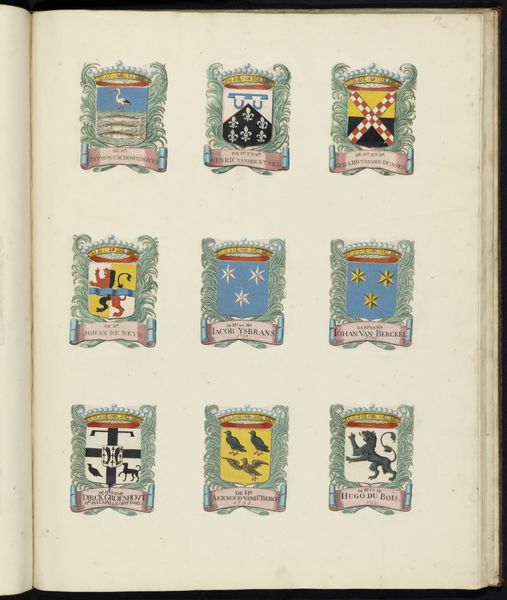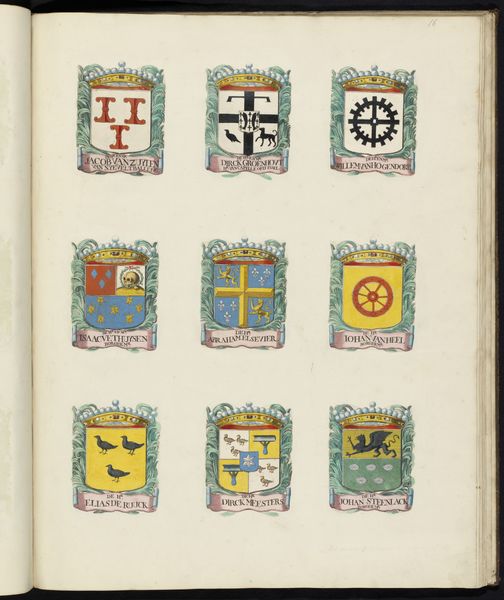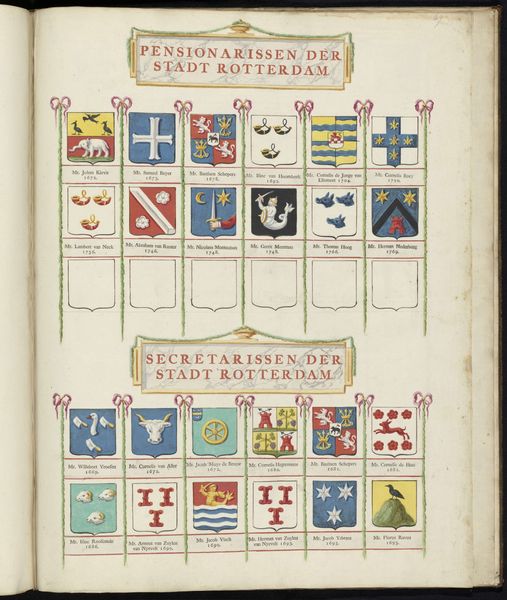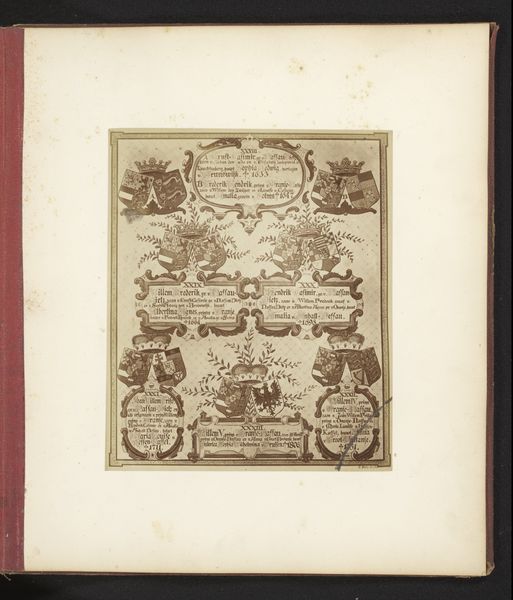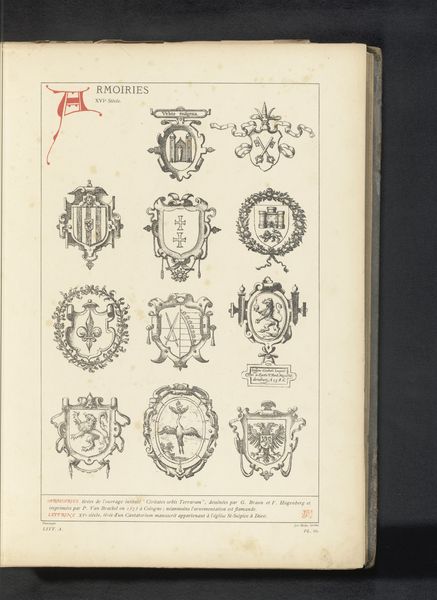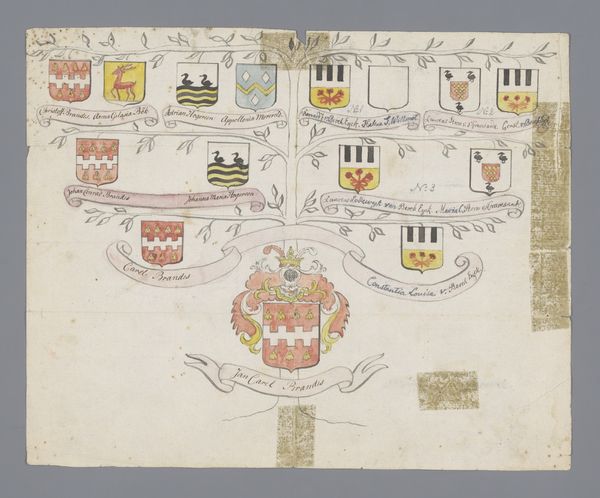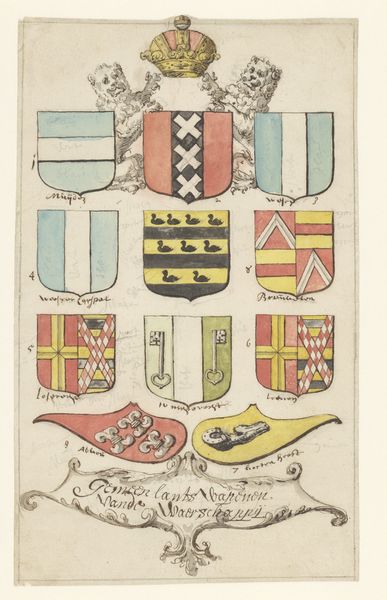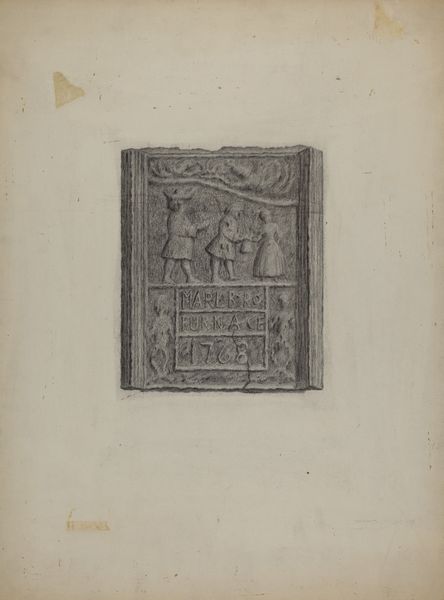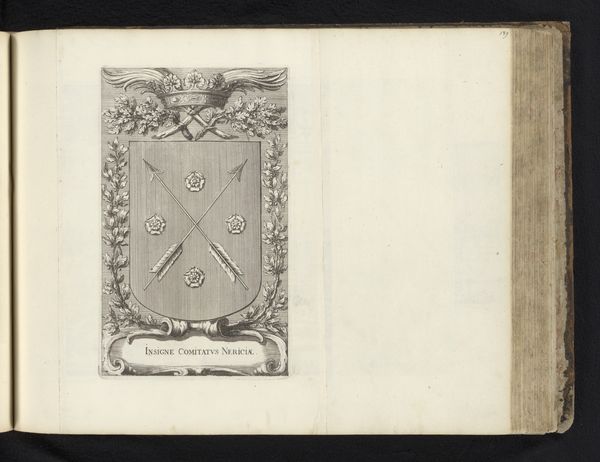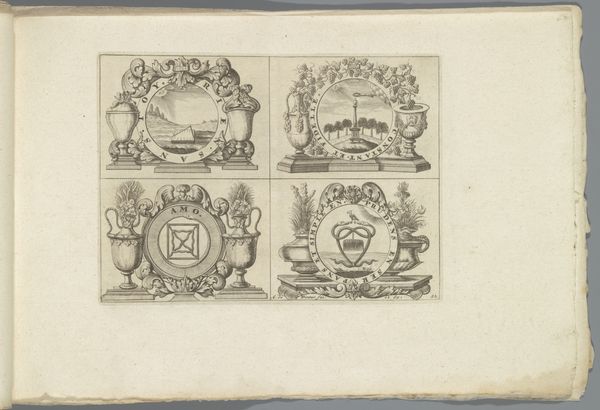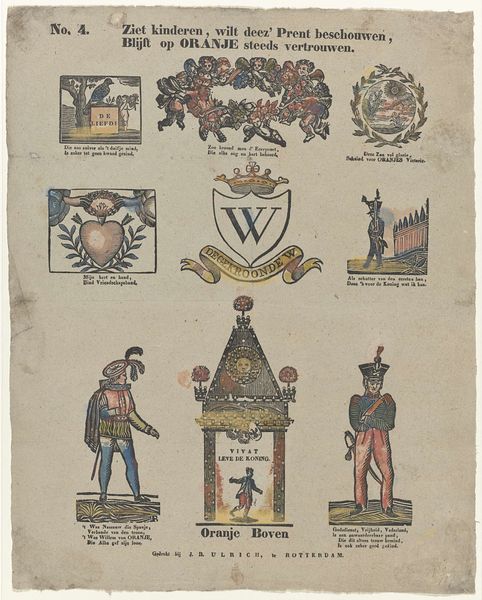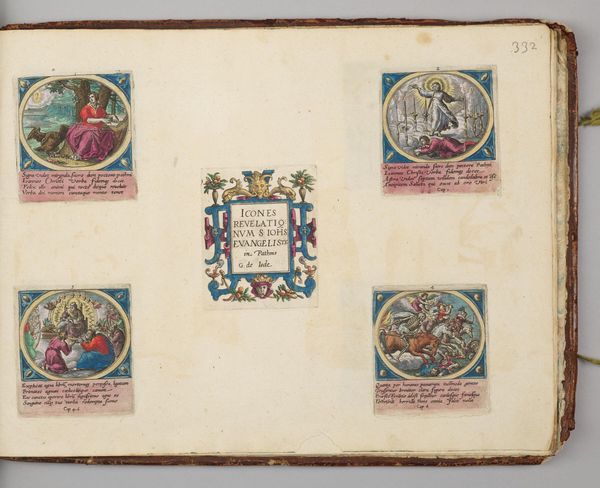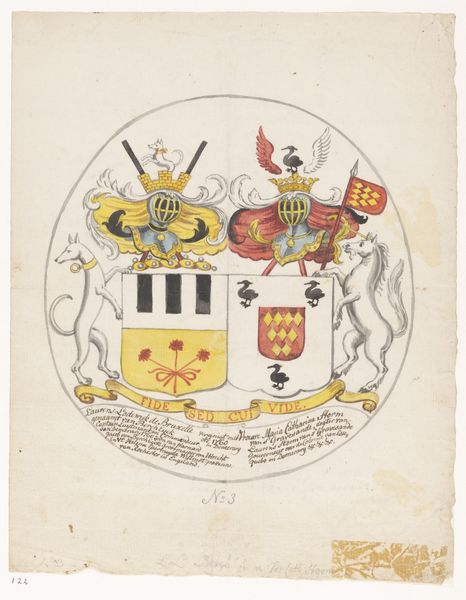
Negen wapens van raden in de vroedschap van Rotterdam, rechtsboven het wapen van Engelbert van Berckel before 1783
0:00
0:00
drawing, graphic-art, print, paper, watercolor, engraving
#
drawing
#
graphic-art
#
dutch-golden-age
# print
#
figuration
#
paper
#
watercolor
#
line
#
history-painting
#
engraving
#
miniature
Dimensions: height 460 mm, width 580 mm
Copyright: Rijks Museum: Open Domain
Curator: So, here we have "Negen wapens van raden in de vroedschap van Rotterdam, rechtsboven het wapen van Engelbert van Berckel," dating from before 1783. It's an intriguing page combining drawing, engraving, and watercolor on paper. Editor: My first thought is…tidy. It feels so contained, almost regimented, but there's also a whimsical, delicate quality to the watercolors. They remind me of elaborate cookies. Curator: That feeling is probably related to the production process. The engraving would have established the uniformity of the shields and text, providing a base, while the watercolors individualized each crest. Consider the skilled labor involved, reproducing heraldry, signifying status, for Rotterdam’s elite. Editor: Absolutely, the colors add a real human touch to what could have been a rather cold, administrative document. Look at the bottom right crest, the one with the deer. The way the brown watercolor washes around the deer and the tiny fence – it has such a sweet vulnerability. Curator: Notice too the standardization within the differences. While each shield features unique emblems referencing the council members, they all adhere to a recognizable visual language of heraldry, indicating social order. Each little miniature contributes to a larger social fabric. Editor: It makes me think about the families, too. Did they get to choose the imagery? Was there an artist who specialized in creating these personal branding emblems? And the size; each is almost jewel-like, precious objects symbolizing power. Curator: It invites considering how images served the Dutch Golden Age's aspirations, their relationship with international trade and colonial ambition visualized in these markers of status and authority. The materials—the ink, paper, pigments—sourced through extensive trade routes. Editor: It's all these layers of narrative hidden within what appears as a simple page. So much gets communicated within these tiny, symbolic images and it makes me realize the real human stories that each crest represents. Curator: Exactly. Examining the intersection of production, social structure, and symbolic representation offers us a glimpse into the workings of 18th-century Rotterdam and its power dynamics. Editor: Agreed. I began by simply thinking of cookies, but I ended thinking of society, a reminder of art's incredible capacity to draw connections between individual feeling and larger worlds.
Comments
No comments
Be the first to comment and join the conversation on the ultimate creative platform.
